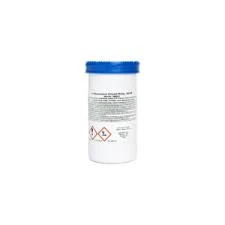flocculant chemicals for water treatment
Flocculant Chemicals for Water Treatment An In-Depth Overview
Water is a fundamental resource for life on Earth, and ensuring its cleanliness and safety is vital for public health and the environment. One of the critical processes in water treatment is flocculation, which uses flocculant chemicals to aggregate particulate matter, making it easier to remove impurities and contaminants. This article will explore the types of flocculant chemicals, their mechanisms of action, applications in water treatment, and the benefits they provide.
What are Flocculant Chemicals?
Flocculants are substances that promote the clumping together of particles in suspension in a liquid. These chemicals facilitate the formation of larger aggregates, or flocs, which can then be easily removed through sedimentation or filtration. Flocculants can be natural or synthetic, with varying molecular weights and charges, and they play a crucial role in different water treatment processes, from municipal water treatment plants to industrial wastewater management.
Types of Flocculants
Flocculants can be categorized into several types based on their chemical composition
1. Natural Polymers These include substances like starch, guar gum, and alginates derived from natural sources. They are biodegradable and non-toxic, making them environmentally friendly options for water treatment.
2. Synthetic Polymers These are man-made flocculants, such as polyacrylamide and polyacrylate, which are widely used due to their effectiveness in promoting floc formation. Synthetic flocculants can be tailored to specific applications based on their molecular weight and charge.
3. Inorganic Coagulants While not traditional flocculants, inorganic coagulants such as aluminum sulfate (alum) and ferric chloride are commonly used in conjunction with flocculants. These coagulants neutralize the charges on suspended particles, allowing flocculants to work more effectively.
Mechanisms of Action
The mechanism of action for flocculants in water treatment involves several key steps
1. Charge Neutralization Many suspended particles in water are negatively charged, which causes them to repel each other. Flocculants typically carry a positive charge that neutralizes the negative charges of the particles, allowing them to come together.
2. Bridging Action As the flocculant molecules adsorb onto the surface of the particles, they create a bridge between them. This bridging action encourages the formation of larger flocs that can settle more quickly.
3. Aggregation and Sedimentation Once the flocs have formed, they can settle to the bottom of the treatment vessel due to gravity, where they can then be removed. This process significantly improves the clarity of the water.
flocculant chemicals for water treatment

Applications in Water Treatment
Flocculant chemicals are employed in various applications within the water treatment industry
- Municipal Water Treatment Flocculants are commonly used to treat drinking water, helping to remove suspended solids, organic matter, and pathogens to ensure safe and clean water supply.
- Industrial Water Treatment Industries generate wastewater containing numerous contaminants. Flocculants help in the treatment of this wastewater, enabling the recovery of water for reuse and reducing environmental impact.
- Mining and Mineral Processing Flocculants play a crucial role in the separation of valuable minerals from ore. They facilitate the settling of solids, improving the efficiency of the recovery process.
Benefits of Using Flocculants
The use of flocculants in water treatment provides several benefits
1. Improved Water Quality By effectively removing suspended particles, flocculants enhance the quality of water, making it suitable for consumption and discharge.
2. Cost-Effectiveness Flocculants can reduce the amount of chemicals required in treatment processes, lowering operational costs in the long run.
3. Time Efficiency Flocculation accelerates the sedimentation and filtration processes, decreasing the overall time required for water treatment.
4. Environmental Sustainability Natural flocculants are biodegradable and have minimal environmental impact, contributing to more sustainable water treatment practices.
Conclusion
Flocculant chemicals are essential tools in the realm of water treatment, offering effective solutions for improving water quality across various applications. With advancements in research and technology, the development of more efficient and environmentally friendly flocculants continues to be a critical focus for the industry. As the demand for clean water increases, the role of flocculants will remain vital in ensuring safe and sustainable water management practices worldwide.
-
Water Treatment with Flocculant Water TreatmentNewsJun.12,2025
-
Polymaleic AnhydrideNewsJun.12,2025
-
Polyaspartic AcidNewsJun.12,2025
-
Enhance Industrial Processes with IsothiazolinonesNewsJun.12,2025
-
Enhance Industrial Processes with PBTCA SolutionsNewsJun.12,2025
-
Dodecyldimethylbenzylammonium Chloride SolutionsNewsJun.12,2025





